Your car depends on a lot of fluids to run smoothly. Engine oil and gear oil are most probably the most important among them. It’s easy to get confused about which oil to use where since there are a bunch running through your car.
Today we are highlighting the key differences between engine oil vs gear oil so that you won’t have to get confused about what to use anymore. We’ll also talk about what happens when you use the wrong oil and when you should change your oil.
What Is Engine Oil

Also known as motor oil in some cases, Engine oil is a special mixture of base oil and a bunch of chemical additives.
Engine oils are specifically designed for internal combustion engines. The primary job of engine oil is to protect your engine parts from overheating and provide the optimum lubrication for smooth and efficient performance.
What Is Gear Oil
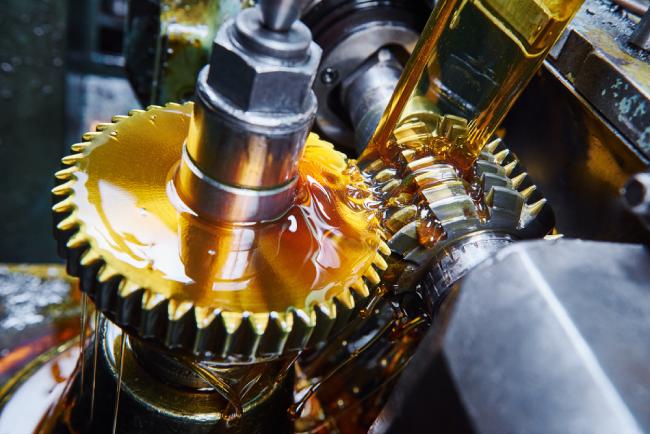
Gear oil, also known as transmission fluid, is also a combination of chemical additives in a base oil. However, they are very much different from engine oil since gear oils are primarily used in your transmission system.
There is a wide range of gear oils available depending on what type of transmission system your car uses. The gear oil is mainly used in manual transmission whereas transmission oils are used in automatic transmission systems.
Engine Oil vs Gear Oil: What’s the Difference
| Comparing factors | Engine oil | Gear oil |
| Density | Thinner | Thicker |
| Targeted parts | Internal combustion engines | Transmission system |
| Viscosity | Low | High |
| Changing frequency | Once every 3000-5000 km | Once every 50,000-100,000km |
| Additives used | Corrosion inhibitors, antifreeze liquids, foam inhibitors, anti-wear agents, dispersants/antioxidants, viscosity index improvers | Gasket conditioners, cold-flow improvers, high-temperature thickeners, friction modifiers, anti-wear additives, pour point depressant, surfactants, detergents, dispersants, viscosity improvers and modifiers |
| Grade | Multi grade ( 5w10, 10w30, 15w40) | Mono-grade (90) |
| pH | Alkaline | Acidic |
| Heat tolerance | High | Low |
| Hydraulic pressure | No | Yes |
Appearance
Engine oil
Engine oil is usually a bit lighter in appearance and amber in color. They get darker over time from the excessive heat and the presence of contaminants. There is a variety of different engine oils with slightly different appearances and specifications.
Gear oil
Gear oils are a bit thicker than engine oils and are usually mixed with a light color dye so that you can find any leakage easily. They can be red, green, or even colorless depending on what type of fluid you are using.
Functions
Engine oil
Parts of your engine move at an astounding amount of reps per minute. All that rotational energy makes the components super hot and if there is nothing to lubricate them like engine oil, the friction force between metal surfaces can become so great that the parts can start to melt.
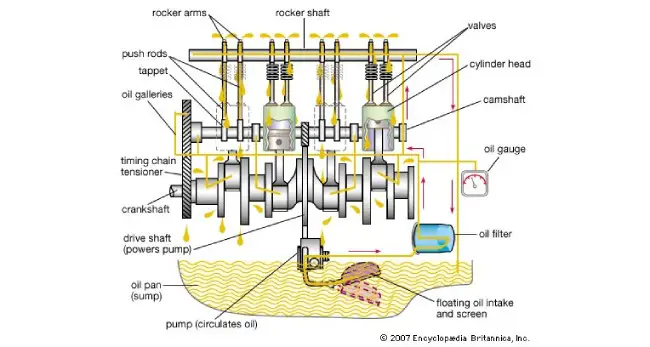
**Photo Courtesy: Wolf lubes
Though the main function of engine oil is to lubricate your engine’s parts and keep them cool, modern engine oils also perform a wide selection of functions such as:
- Enhances sealing
- Provides protection against rust and corrosion
- Removes contaminants
- Maintains a constant temperature
- Optimizes engine performance
Gear oil
Gear oils perform a wide range of functions to keep your transmission system running smoothly. There are more than 20 additives found in different gear oils/transmission fluids that enable them to handle numerous tasks to keep your transmission system efficient.

**Photo Courtesy: Bk Kent Week
Some of the functions of gear oils are as follows:
- Enhances sealing
- Provides efficient cooling and heat transfer
- Maintains hydraulic functions
- Lubricates gears, friction discs, bands, and the entire hydraulic system
- Removes contaminants
- Protects gears against rust and corrosion
- Enables smooth shifts
Viscosity
Engine oil
Viscosity usually refers to the resistance to flow on any fluid. The more viscous a fluid is, usually, the slower it will flow. However, the viscosity of engine oil and gear oil can be a bit confusing. In general, Engine oil looks and feels a bit thinner than transmission oils/gear oils.
Gear oil
Modern-day gear oils may not look and feel similar to engine oil, but the label indicates otherwise. Modern additives can make a liquid act differently at different temperatures.
Even so, the label can be confusing sometimes, we strongly recommend you to follow the instructions. Years of research and development have made gear oils look less viscous but act the opposite inside your transmission system.
Additives
Engine oil
Engine oils are created by mixing a number of chemicals to enhance the oil’s properties. Some of the most prominent additives used in modern-day engine oils are:
- Corrosion inhibitors
- Antifreeze liquids
- Foam inhibitors
- Anti-wear agents
- Dispersants/antioxidants
- Viscosity index improvers
Gear oil
Gear oils have a larger number of additives. However, the additives from engine oils and gears oils aren’t the same. The additives depend on the transmission type you are using. Some of the additives that are added into your gear oil/transmission fluid are as follows:
- Gasket conditioners
- Cold-flow improvers
- High-temperature thickeners
- Friction modifiers
- Anti-wear additives
- Pour point depressant
- Surfactants, detergents, and dispersants
- Viscosity improvers and modifiers
Duration
Engine oil
Engine oils are exposed to external contamination and tend to get darker over time due to excessive heat and pollutants. They need regular maintenance to keep your engine working at its peak condition. You should change your engine oil roughly 3000-5000 kms.
Gear oil
Gear oils work in a closed system, usually don’t have to deal with higher temperatures like engine oil, and come in contact with comparatively fewer pollutants. That’s why they don’t need frequent changing. Once every 50,000-100,000km is enough.
Properties
Engine oil
The base oil stock occupi up to 95% and has the property to provide lubrication to the engine parts. Different additives with different properties are added to the base stock to increase the performance and properties of your engine oils. They are a bit alkaline by nature.
Gear oil
Gear oil/transmission fluid are kinda similar to engine oil. The main properties of the base oil is providing lubrication and hydraulic pressure. Additives and dyes added later give gear oil their distinctive properties and appearance. Gear oils are acidic.
There are both similarities and differences between the properties of engine oil and gear oil. For example, engine oil can tolare much more heat than gear oils and contains sulfur and phosphorus additives. On the contrary, gear oils can provide hydraulic pressure that engine oils simply can’t.
FAQs
1. Can I use the gear oil as engine oil?
Ans: No, absolutely not. The properties of engine oil and gear oils are very different and cause serious and expensive damages to your car parts. The manufacturers specifically named gear oils as transmission “fluids” so you don’t pour whatever “oil” you find into your car.
2. What happens if I use gear oil in the engine?
Ans: You are heading to a costly engine replacement. Gear oils contain sulfur/phosphorus additives that can seriously damage the parts of your engine, turning your engine into a useless piece of junk.
3. What do engine oil numbers mean?
Ans: The numbers usually refer to the viscosity of that particular oil solution. They express the difference in viscosity of the oil in 2 different temperatures.
For example, 5W-20 means that the oil has lower viscosity (SAE 5W grade) in the colder temp. and higher viscosity (SAE 20W grade) in the operating temperature of the engine. The “W” stands for winter.


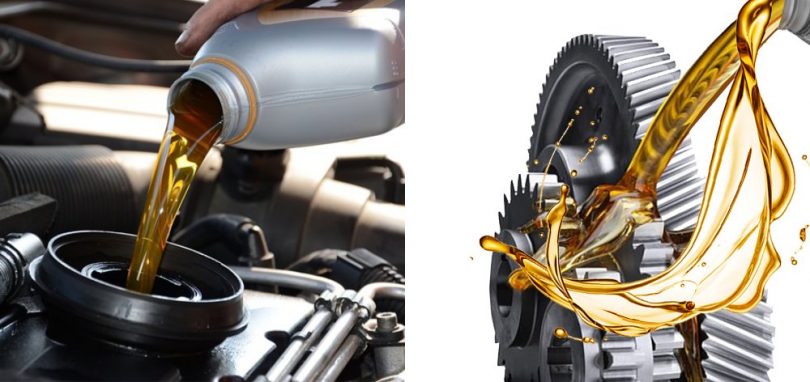
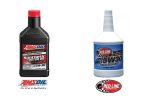



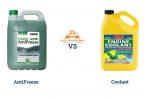


Leave a Comment